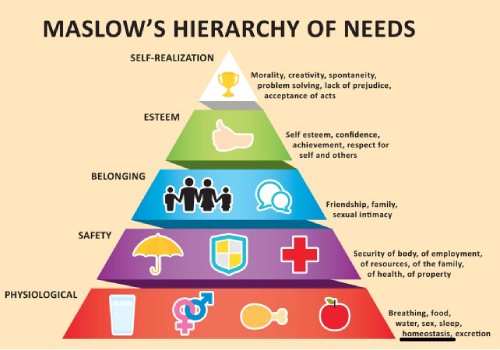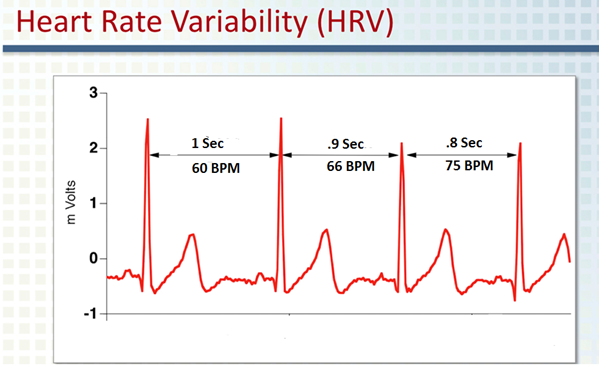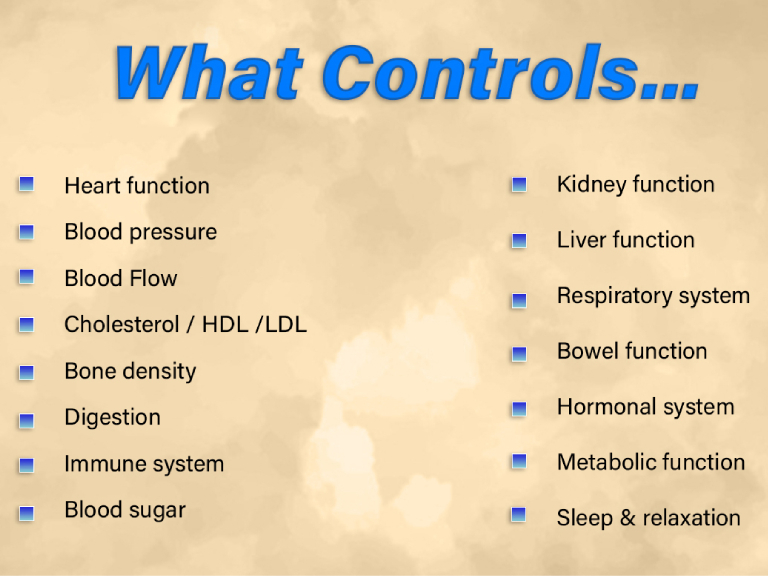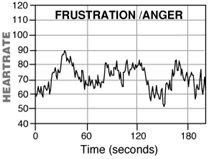The three types of Stress that act on the Human Body
There are 3 types of stress that act on the human body there is a Physical Stress, a Chemical Stress and an Emotional Stress.
Physical stress is when we have had an injury a fall or a trauma. A chemical stress can be a flu or bacteria, virus or toxins in the air, food and drink. An emotional stress can be a breakup, a death or lack of support. Stressors also work in combination with each other for example you can experience food or alcohol poisoning and feel emotionally distressed or distraught from its effects. Or experience a physical stress eg a broken limb and feel dejected or emotionally withdrawn due to not being able to express or participate as you would normally. All of these stresses knock your brain and body out of balance or homeostasis. Fig 1.You may recall from secondary school biology or a studying Maslow’s hierarchy of needs that the body is regulated by a process of homeostasis and the definition of stress is when your brain and body are knocked out of homeostasis.


HeartMath Introductory Video
HeartMath & Emotionality


Since 2001 over 20,000 health professionals across the USA, Europe and Asia have adopted the HeartMath techniques and technologies. The HeartMath approach has been proliferating into the fields of fitness and psychotherapy over the last 10 years. This training along with my engineering background and 8 years working as a front line project worker provided me with the necessary tools and resources to discern on a scientific level the psychological and biological impact that sustained exposure to EMF & RF has on our health. Our CPD approval, enables us to facilitate EQ ( Emotional Intelligence) courses with Engineers Ireland. We run courses in schools, addiction center’s and corporates through out Ireland.
The Cardiac Electrical System and how the Heart Beats.
Before I delve into how EMF & RF effect our emotionality, attitude and behavior, It is important to attain a brief understanding to how the heart works. The electrical system of the heart is critical to how it functions. The electrical system determines heart rate (how fast the heart is beating) and also coordinates and organizes the beating of the heart muscles, so that the heart works efficiently with each heartbeat.
Abnormalities in the heart’s electrical system can cause heart rate to be too fast or too slow or entirely disrupt the normal functioning of the heart—even if the heart’s muscles and valves themselves are entirely normal. Talking about the cardiac electrical system and abnormal heart rhythms can be very confusing. When heart disease is discussed, the perception is generally of blocked coronary arteries leading to a by pass surgery or heart attack.
It’s helpful to picture your heart as a house and the cardiac electrical system as the wiring that provides power throughout the structure. It’s possible to have problems related to faulty wiring even if the building itself is completely normal. Likewise, your heart could be normal but an electrical problem may occur causing an abnormal heart rhythm.

The heart generates its own electrical signal (also called an electrical impulse), which can be recorded by placing electrodes on the chest. This is called an electrocardiogram (ECG, or EKG). Fig 2
In addition to being an efficient pump supplying blood to our entire body, the heart is also our main electrical power center. It generates 40 to 60 times more electrical amplitude than the brain. The heartbeat, which produces an electrical signal, can be measured at any point on the body. A doctor could place electrodes on your ear lobes, little toe or anywhere on your body and record your electrocardiogram (ECG) signal. Quite literally, the electrical signal from the heart permeates every cell (yes all 50 trillion of them) in fact, studies at the HeartMath research center are showing that the quality of that signal affect your cells health and regeneration.
Normal sinus rhythm (NSR) is another name for the normal heart rhythm. Normal sinus rhythm is generally defined as between 60 beats and 99 beats per minute. The heartbeat is controlled by regular electric signals (also called an electrical impulse) that spontaneously arise in a structure called the sinus node.
The systemic and precise nature of the electrical impulses ensures that the heart chambers and valves operate in an orderly and rhythmical fashion. While there are electrical impulses controlling the valves and chambers, these electrical impulses vary over different intervals which we will discuss.
Heart Rhythm and Emotionality
In the late 1980’s cardiologists had noticed measured changes in the ECG of people with a history of emotional stress. (Huang, EBey, and Wolf 1989), we know an electrocardiogram (ECG) measures the electrical potentials occurring during the heartbeat. The HeartMath institute formed in 1991 (initially a team comprised of cardiologists psychologists, medical researcher’s educators, engineers, educators) found that strong emotional states did in fact change the shape of the ECG. What they found was that the pattern of heart rhythm reflected a person’s emotional state better than any other heart, brain or skin measurements that were available in the scientific domain.
While they also looked at the heart rate (the number of times a heart beats in a minute) it did not accurately reflect any emotional state.
It was commonly thought that a healthy heart is one that beats at a steady pace (equal intervals) but the inverse is actually the case.
The heart rate changes with every heartbeat and by analysing the beat-to-beat changes (called heart rate variability – HRV or heart rhythm analysis) what they found was the greater the variability between beats the healthier the heart. Fig 3.


Looking at the beat to beat changes over a longer time period a pattern emerges. Fig 4.
On the y-axis you have the beats per minute and the x-axis the time in seconds.
There are 18 heart beats shown in blue dots. As above when the time between heartbeats reduces eg. between 12-14 sec the heart rate increases and as the time increases eg. Between 15-18 the BPM decreases. The blue line that connects the blue dots forms the heart rhythm pattern.
Each upslope indicates an increase in heart rate and each downslope indicates a decrease in heart rate.
Now let’s look at heart rhythm from someone in different emotional states.
Take the example in the chart below. Fig 5. These two heart rhythms are created by the same person.

Q: What do you think the person what doing that created the top heart rhythm pattern?
A: She was instructed to feel frustration. When she shifted to feeling frustrated, her heart rhythms became chaotic looking.
Depleting emotions such as frustration, impatience or anxiety are reflected in an irregular, chaotic HRV pattern. In scientific terms this is known as incoherent heart rhythm.
Q : What do you think the person was doing that created the bottom heart rhythm pattern ?
A : She was asked to feel appreciation. When she shifted into feeling appreciation, her heart rhythm pattern changed.
Renewing emotions such as appreciation create a more ordered, harmonious pattern. This is known as a coherent heart rhythm.
Coherent and Incoherent Heart Rhythms.
What the HeartMath institute found was that the pattern of beat-to-beat changes reflected the subjects emotional state. Through further analysis therefore discovered that a critical link between emotional states and the rhythms of the heart. This was first published in the American Journal of Cardiology in 1995. studies found that positive and uplifting emotional states, such as sincere love, care, compassion, and appreciation, create a smooth and ordered sine like heart rhythm pattern, Fig 6 these wave patterns are what heartmath call coherent heart rhythm patterns. Emotional states like anger and frustration exhibited chaotic and irregular heart rhythm patterns, these wave patterns are what heartmath call incoherent heart rhythm patterns Fig 6.
These heart rate changes are influenced by almost anything the brain and mind process, such as memories, thoughts and sounds, but they are especially influenced by your emotions.

The Autonomic Nervous System (ANS)

Letting go of stress or dealing with a chemical stress of poison in our system requires changing our response to the stress, this reponse will depend on our conscious response and our Autonomic response. Our brain is designed to interpret stress as a threat to your safety and security. It’s stress response mechanism activates your Autonomic Nervous System (ANS), for what’s called “fight or flight” – either conquer the danger or get away fast. This ancient survival mechanism evolved as part of our ANS and was critical when we human beings had to protect ourselves or run from predators . Most of our stresses today are not life threatening, yet our bodies stress response system does not discern the degree of threat.
The challenge and opportunity is to learn how to interact with your stress circuitry to regulate its response systems so they work for you rather than against you.
This starts with regulating your Autonomic Nervous System which up until the early 1990’s was thought difficult if not impossible to do. “Autonomic” means acting involuntarily; an autonomic process is one that goes beyond our conscious awareness,
The Autonomic Nervous System (ANS) controls 95% of our bodily internal functions Fig 7, including breathing, digestion, heart rate, immune system, important aspects of our hormonal system , alertness and sleep.
The ANS is comprised of two branches which are connected to the heart. The two branches of the ANS (Autonomic Nervous System) are the sympathetic nervous system which prepares the body for action by speeding up the heart rate, dilating the bronchioles in our lungs, decreases secretion to digestive food. The sympathetic branch can be compared to a gas pedal in a car. The other branch the parasympathetic nervous system, can be compared to the break pedal because it slows down the body and heart rate, constricts bronchioles and increases secretion for digestion. The parasympathetic branch is activated when we are resting and replenishing. Fig 8.
Any change in activity in either branch affects the way the heart beats on a beat to beat basis. Any emotion we feel changes the activity in the branches of the ANS and has a major influence on all of our bodies systems.

Emotions like anger, frustration, worry cause signals going down the two branches of the ANS to get out of sync with each other. This is like driving with one foot on the car’s accelerator ( the sympathetic nervous system). and the other on the brake (the parasympathetic nervous system) Fig 9. it creates a herky-jerky ride and burns more fuel.
Just as this causes extra wear and tear on the car, having the two branches of the autonomic nervous system out of sync causes extra stress on your body. The body constantly strives to maintain coherence and homeostasis through out.

Heartmath and Stress Video
Heart Rate Variability (HRV) & Autonomic Nervous System ( ANS)
Transforming the Stress Response

Since our heart rhythm is the primary generator of rhythm in the body and constantly telling our brain how our body is feeling. Heartmath has developed techniques to change your heart rhythm and emotional or attitudinal state. As we shift heart rhythm we shift perception and as we shift perception we shift heart rhythm, its a virtuous (or sometimes vicious) cycle.
Changing your heart rhythms as you might do with techniques like Quick Coherence, is more effective at relieving stress than techniques like relaxation. If you’re feeling worried, frustrated, anxious or angry, relaxation can turn down the volume on this emotional noise, but it does not change the stress circuitry.
The pattern in fig 9 is an example of Autonomic Nervous System efficiency. What’s happening is that the two branches of the autonomic nervous system ( Sympathetic and Parasympathetic) are “entraining” and working together at maximum efficiency instead of fighting each other. Think of entrainment as being “in sync.” When your head and heart, thoughts and feelings, are working harmoniously together, you have more clarity and inner balance–and you feel better.

Where there is Life there is Electricity
If we look at an organism to determine if there is a presence of life, we look for a pulse, a heart beat what is really being sought is the presence of electricity, An ECG (electrocardiogram) and EEG (electroencephalogram) displays is the presence of electricity in the target organs of the heart and brain. When we see that electricity is a form of life and given that on a cellular level EMF fields are part of life itself, we can say that all of life is Electromagnetically sensitive
In the heart rhythm and emotionality section we examined how heart rate changes are influenced by almost anything the brain and mind process, such as thoughts and sounds, but they are especially influenced by your emotions.
We now know there is a two-way communication system between the heart and the brain that regulates heart rate and blood pressure so the variance that can be seen as HRV is the interaction between signals coming from both the heart and the brain. Fig 10

An ECG can be attached to any part of the body and you will get an electrical pulse and this pulse is the same right down to the cellular level, remember we have electricity passing through each of our 50 trillion cells. Our Autonomic Nervous System strives to keep the two branches the parasympathetic nervous system (Brake) and sympathetic nervous system (Accelerator) in a state in a synchronous state or a homeostatic state.
The key to synchronization is the joint actions of cells that co-operate electrically – linking populations of biological oscillators that couple together in large arrays and synchronize spontaneously.
Our cells (pacemaker cells) health relies on the harmonious biological oscillations which can be disrupted by exogenous environmental signals, resulting in the desynchronization of the neurological processes which control critical executive functioning of the brain-gut, and heart, including metabolism, sleep, and hormonal systems.
Just as when we feel emotionally stresses which in turn is reflected in our HRV or heart rhythm pattern Fig 11 chemical stressors acting on our cells over extended periods of time degenerates the cell and it becomes unhealthy as it’s not able to share information with other cells, this electromagnetic energy that the cell emits and receives is the life force that governs molecules.

The Digital age. What does that really mean Emotionally?
In the standards and effects page we gave an overview of the thermal and non thermal effects of EMF & RF. I want to discuss analog technology and digital technology before we can proceed. Analog and digital are two different ways of describing quantity. This quantity may be someone’s voice, a video recording, music, information via bluetooth etc. The signal that is sent between devises is where this quantity of information/data is stored. Similarly to the signal the heart sends to the brain via the Autonomic Nervous System, all these signals represent coherent or incoherent patterns of information that exhibit mode’s of behaviour/attitude/emotion an organism may exhibit.
An analog signal converts information into waves of varying amplitude and frequency. Analog signaling is most suitable for displaying information that is constantly changing. Eg. recording an orchestra, that if full of subtle overtones.
In Digital form, the translation of information is converted into binary format that is zero or one or 0101001.In this process each bit of information is the representative of two different amplitudes. Fig 12


A mobile phone works by converting your voice into discrete digital signals which are then sent via radio waves to the receiving cell phone, so even though our analog voice is converted to digital signals. Those digital signals are then converted back to analog signals before the listener receives them the reason is because we cannot process digital signals we can only process analog signals. The EMF & RF page we discussed the electromagnetic spectrum Fig 14. and non-ionizing radiation. Throughout this spectrum, there are multiple modes of energy transfer ( electric, conducted, magnetic and radiated) present all at varying frequencies.


Coherent and Incoherent Intra Cellular Communication
In the section of where there is life there is electricity I explained that an ECG can be attached to any part of the body and you will get an electrical pulse and this pulse is the same right down to the cellular level, remember we have electricity passing through each of our 50 trillion cells. In order to sustain life and health, our cells communicate with each other by exchanging vital information transmitted through different Electromagnetic frequencies.
Physicist Fritz- Albert Popp, PH.D discovered that when a cell does not emit enough organized and coherent electromagnetic energy, the cell becomes unhealthy as it is not able to share information with other cells very well. Heartmath physicists can predict up to 85% accuracy weather what emotion a person is feeling by examining their heart rate variability as the information of how coherent the ANS is operating is encoded in the HRV pattern.
Just as the ANS communicated to our brain our physiological state. Our cells communicate information, coherently or incoherently in an analog fashion.
Wave Modulation
Wave modulation is the process where radio and microwave frequencies can be used to transmit audio or video information. Electromagnetic waves may be modulated to encode a digital or analog signal. This is how radio and microwave frequencies can be used to transmit audio or video information.
Radio and TV transmissions, as well as cellphone communications, all use a modulated signal on top of a basic ‘carrier’ wave.
In the case of these modulated waves, it appears that the encoded signal itself (apart from its carrier wave) is also a possible source of biological effects. Take fig 16 below showing spectrum analysis and waterfall graphs of signals from an analog fm radio.

We have been living with radiowaves for a long time as we can see by the lower graph (blue) the time axis ( on y axis) the signals are continuous they are not pulsed. The signals exhibit a waterfall effect. Our bodies and brains can easily adapt to these signals similar signals that our heart/brain/cell exhibit.
When we examine the same analysis from a DECT (Digital enhanced cordless telephone) Fig 17. We see in the blue time domain that the continuous water fall signal are replaced by sharp pulses. Just as we used the analogy of a light switch being continuously being turned on and off our bodies cannot adapt to these sharp pulses.

Take a similar example of a 2.4GHz router emitting a continuous pulse below Fig18.

In Fig 19 below we have an oscilloscope picking up the signal from a wifi on polling mode.
So every 10th of a second or so its sending out a signal and biologically disrupting you this is because no organism can adapt to these digital pulses. So then one was blown up to take a look at 100 times magnitude it looks like an abrupt sharp incoherent pulse. By blowing it up further and you can see the digital10101010’s
Just like the light switch its incredible the way we are exposed. This is the structure of the digital pulsed world around us.

The Effects Of Incoherent Wave Modulation
Recent science has found that positive emotions and smooth heart rhythm patterns Fig 9 facilitate cortical or higher brain function, whereas stressful emotions and disordered heart rhythms Fig 8 inhibit a persons ability to coherently organize thoughts or reason clearly. In fact the dissonance effects higher brain executive functioning in which our decision making, reaction times, spatial awareness, self-regulation short and long term memory are effected. (McCraty & Athinson 2003) .
When an organism becomes under stress there are secretions that are released. We know about adrenalin and cortisol these are hormones that are secreted by the body to mobilize you so that you can run and fight and mobilize your energy.
But each cell has its own defense mechanism and this is known as the cellular stress response.
So the Cellular stress response is when the cell comes in contact with an unfriendly environment (Chemical Stress) eg..temperature is raised or ph acidity changes (eg alcohol, toxic ions) or in other a condition for the cell to survive. When we are exposed to RF radiation the DNA within that cell comes apart to make stress proteins.
The stress protein is an indication by the cell in its own language that it has come in contact with something that is bad for it or potentially harmful.
So when the cell interacts with emf in the environment the cell is telling you through the manufacture of these stress proteins that it is harmful.
The most important part of this is the public education campaign, we must realize that just because they cannot feel it or see it its having its effect and that these effects are cumulative.
Why Does Electromagnetic Radiation Affect You Emotionally?
Put simply when an electromagnetic wave passes through your body, it induces an electric current inside you.
Your body naturally uses electrical impulses for many purposes (e.g. thinking, conveying sensory information, initiating muscular movement and controlling heartbeats.)
Even the chemical processes which go on in our cells, blood, body tissues and organs, which we don’t normally think of as being electrical in nature, all rely on electric charges inside the body for their proper function.
So an external EMF that creates electric currents within your body can, and does interfere with many biological processes.
Some of these biological effects can actually be harnessed for beneficial uses such as relieving pain or healing bone tissue, so electromagnetic radiation is not necessarily all bad.
But unfortunately, the radiation that penetrates our bodies every day, is far from beneficial. Initially it may just cause unpleasant symptoms, but unless action is taken to limit exposure, a more permanent health effect may occur later.
Symptoms Of Exposure To Emf Pollution
- Anxiety
- Concentration Difficulties
- Fatigue
- Headaches
- Memory Impairment
- Nausea
- Palpitations
- Skin Rashes
- Sleep Disturbance

